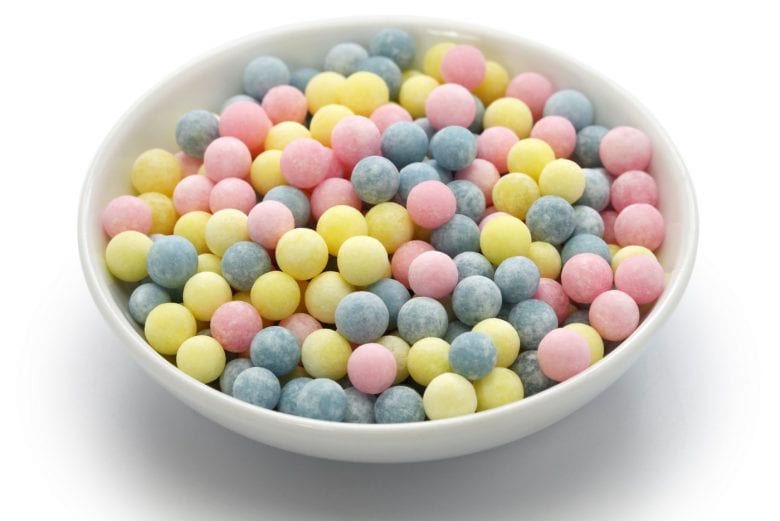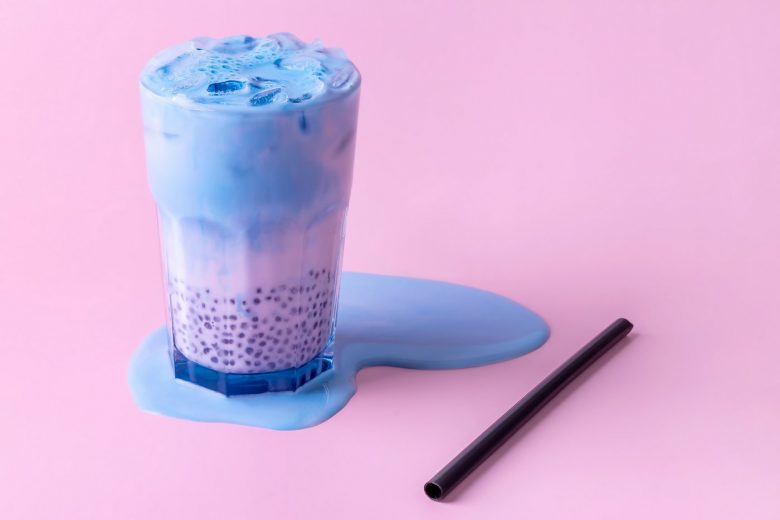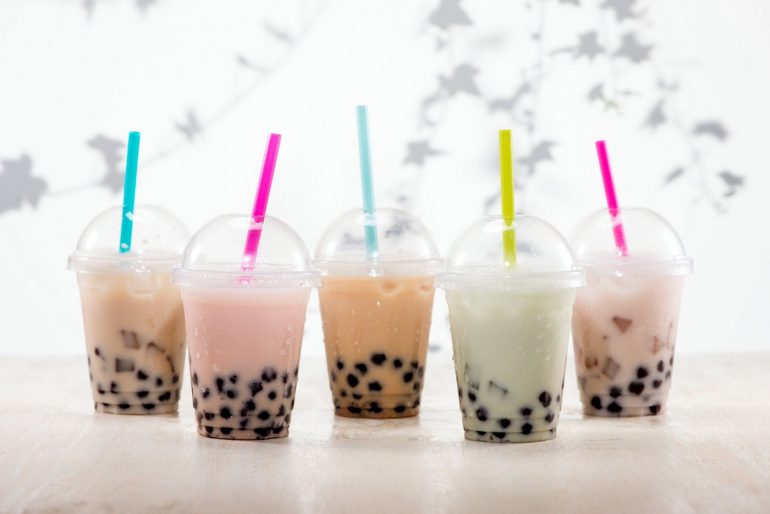What exactly are those chewy little balls in the bottom of cups of bubble tea? Since they kinda look like plastic, you might also wonder: Are they actually okay to eat?
Here, get the scoop on those deliciously squishy little boba pearls in the bottom of your bubble tea.
Tea time!
Bubble tea, pearl milk tea, boba tea — whatever you call it, it’s delicious and refreshing. But baffling many people are those chewy little balls at the bottom of the cup.
They don’t usually have much of a flavor of their own — apart from a bit of sweetness — yet for some reason, you can’t help but slurp them up through the oversized straw and chew ’em up. But what are they?
And the mystery ingredient is…
They’re tapioca pearls — most commonly, black tapioca pearls, but they also come in colors.
Yes, the little chewy bits at the bottom of your tea are essentially the same thing used to make that classic dessert, tapioca pudding. And tapioca? It’s simply a starch extracted from the root of the cassava plant.
Not only safe to eat, but no gelatin is involved, so they’re also suitable for vegans!
When the boba pearls are cooked correctly — just boiled for a bit, and then cooled and maybe flavored with some sugared flavoring or syrup — you end up with a little sphere about a half-inch in diameter with the texture of a gumdrop or gummy bear, and a slick, almost slimy, feel.
The colored pearls look like this before cooking:

They’re not added only to teas, but also may show up in coffee-based drinks, chocolate and cocoa, and even fruit smoothies.
ALSO SEE: How do you make a perfect cup of tea?
Pearl tea was invented in Taiwan. According to one story, years ago, a Taiwanese tea vendor outside of a school added the little boba balls to his shaken teas to make his drinks stand out to the students. Apparently, it worked.
The boba pearls don’t really serve much of a purpose in the tea, other than to add a texture, some bite, a slight flavor, and a little fun to be enjoyed along with the drink. (Well, okay, they look cool on Instagram, too.)

Big boba business
Strange? Maybe. But those little boba balls in bubble tea beverages are a brilliantly big business.
According to a 2019 report published by Allied Market Research, the global bubble tea market was valued at $2.4 billion in 2019, and projected that it will grow to $4.3 billion by 2027.
And where are boba tea beverages most popular? The North American bubble tea accounted for more than one-third of the global bubble tea market share in 2019.








